8 Types of Grass in Louisiana (With Pictures)
-

- Last updated:
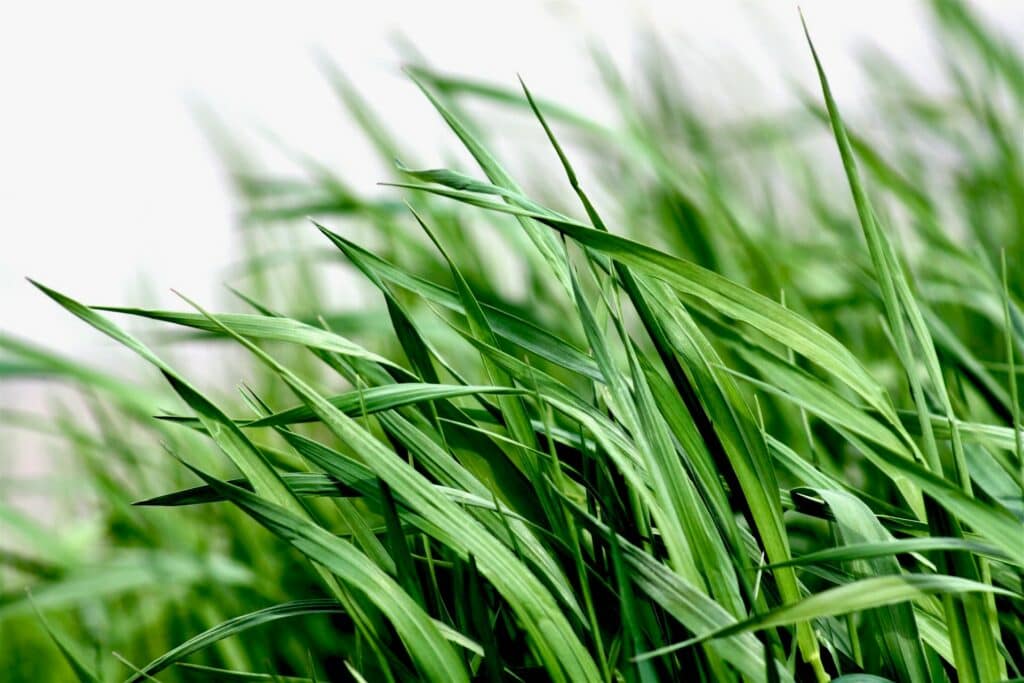
If you live in the fine state of Louisiana and are looking for the right grass for your lawn, we’ve got your back! The Sugar State has a humid, subtropical climate. The summers are quite long and hot (up to 100ºF), while the winters are relatively short and warm. Droughts are very common, too, and it’s very important to consider all these factors before picking the grass for your turf.
Good news: we did all the heavy lifting for you! In this guide, you’ll find the eight best grass types for Louisiana. They easily handle the tough local climate, require little care, and look great in any environment. So, without further ado, let’s look at each species in great detail to see which one will be the perfect pick for your lawn!
The 8 Types of Grass in Louisiana
1. Centipede Grass
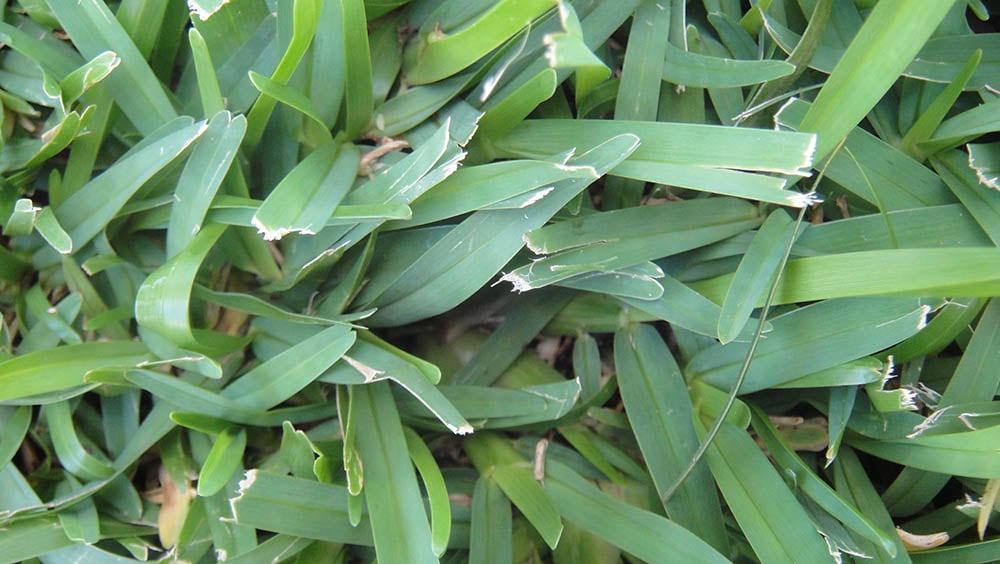
| Botanical Name | Eremochloa ophiuroides |
| Soil | Sandy, low-fertility, limey (pH 4.5–6.0) |
| Sun | Full sun |
| Hardiness Zone | 7–10 |
| Drought Tolerance | Low/Moderate |
| In Bloom | Summer to fall |
Slow growing yet dense, the centipede grass is one of the best grasses for a lawn in Louisiana. It’s low maintenance and quite resistant to diseases and pests. On the downside, drought tolerance is low. As for the soil, it should be sandy and limey if you want to cultivate steady growth. Adding 1–2 pounds of nitrogen per 1K square feet of the lawn will make centipede grass grow even better.
On average, it’s recommended to add fertilizer once a season (four times a year). Also, keep in mind that the centipede grass soil pH requirements are quite low for turfgrass. If the pH is too high, the leaves will turn yellow. Full sun is preferred, but this grass can handle partial shade quite easily.
2. St. Augustine Grass
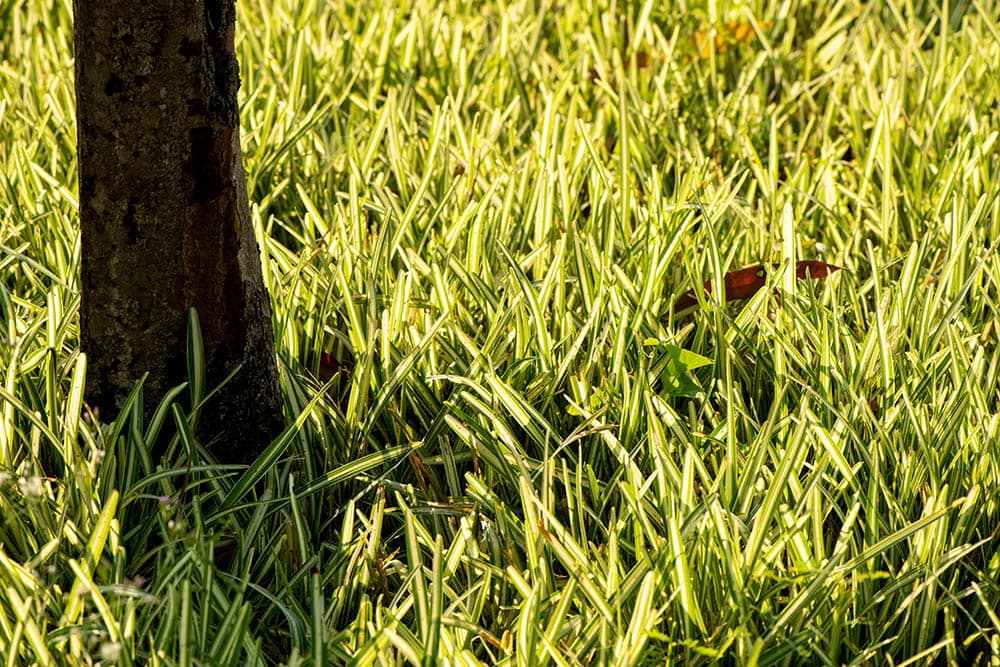
| Botanical Name | Stenotaphrum secundatum |
| Soil | Well-drained, sandy, fertilized (pH 5.0–8.5) |
| Sun | Full sun/partial shade |
| Hardiness Zone | 7–12 |
| Drought Tolerance | Moderate |
| In Bloom | Early July through early winter |
Well-drained, moderately fertilized soil, full exposure to the sun/partial shade, and watering twice a week—that’s all you’ll need to get started with the St. Augustine grass. Also known as buffalo turf in certain parts of the world, it’s incredibly popular in the Gulf States because of its impressive tolerance to humidity and heat. Hardy to zones 7–12, this grass can thrive in the hottest parts of Louisiana.
The dark green color, wider-than-average blades, and thick nature make it an even better pick. Also, St. Augustine is a fast grower, and to help it survive through the winter days, do remember to change the mowing height a bit during the September-November period. You might also have to apply a healthy amount of fungicide to prevent fungi growth.
3. Bermuda Grass
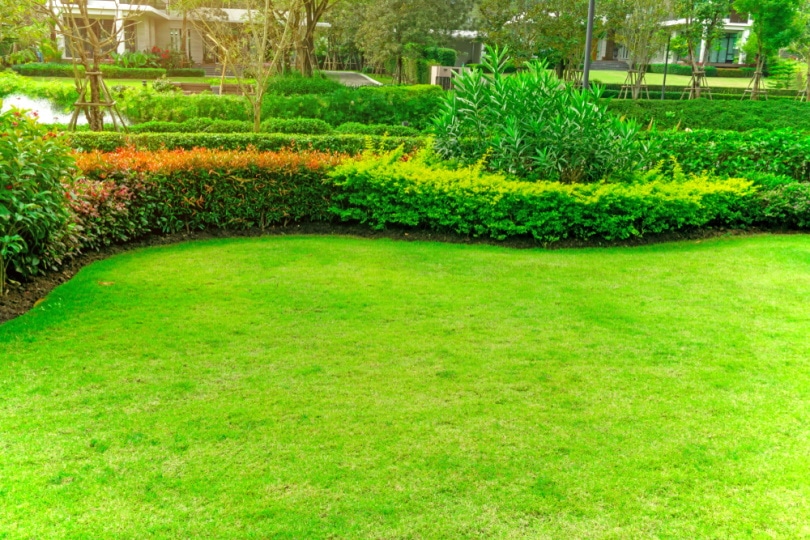
| Botanical Name | Cynodon dactylon |
| Soil | Sandy, clay, limey (pH 5.8–7.0) |
| Sun | Full sun/partial shade |
| Hardiness Zone | 7–11 |
| Drought Tolerance | High |
| In Bloom | Late spring through early fall |
This is truly international grass; you might know it as the dog’s tooth grass or the Bahama grass. Soil requirements are modest: as long as it’s sandy and a bit limey, expect rapid growth. Full exposure to the sun is preferred, but partial shade will also do. More importantly, the Bermuda grass is tolerant to drought; the same is true for humidity and salt, which is great news for the unforgiving Louisiana climate.
Tough (easily withstands foot traffic), quick to recover, and very resistant to diseases, this grass is a safe pick. It does require heavy fertilization during the growing season (which starts in late spring) and mowing at least once a week, of course. A quick note: Bermuda is an invasive species and can “take on” your flowers very quickly.
4. Zoysia Grass

| Botanical Name | Zoysia |
| Soil | Well-drained, clay, sandy (pH 6.0–6.5) |
| Sun | Full sun |
| Hardiness Zone | 5–10 |
| Drought Tolerance | Moderate/High |
| In Bloom | May through late summer |
If you’re looking for an early bloomer, the Zoysia grass will be a worthy pick, as it blooms in May. Now, while it does prefer full sun and sandy, well-drained soil, it is hardy to zones 5–10. That means it’s a bit more resistant to colder temperatures than the average grass species. Drought tolerance is high as well, along with resistance to weeds.
Mow the Zoysia grass regularly with a reel mower (keep it at 1–2-inches tall). Water it infrequently but generously (1.5-inches per week during the high season). Fertilization and maintenance requirements are rather moderate. A quick note: you’ll notice the grass becoming thinner the less sunlight and water it gets. During the dormant season, it turns brown but remains thick, rough, and prickly.
5. Carpet Grass
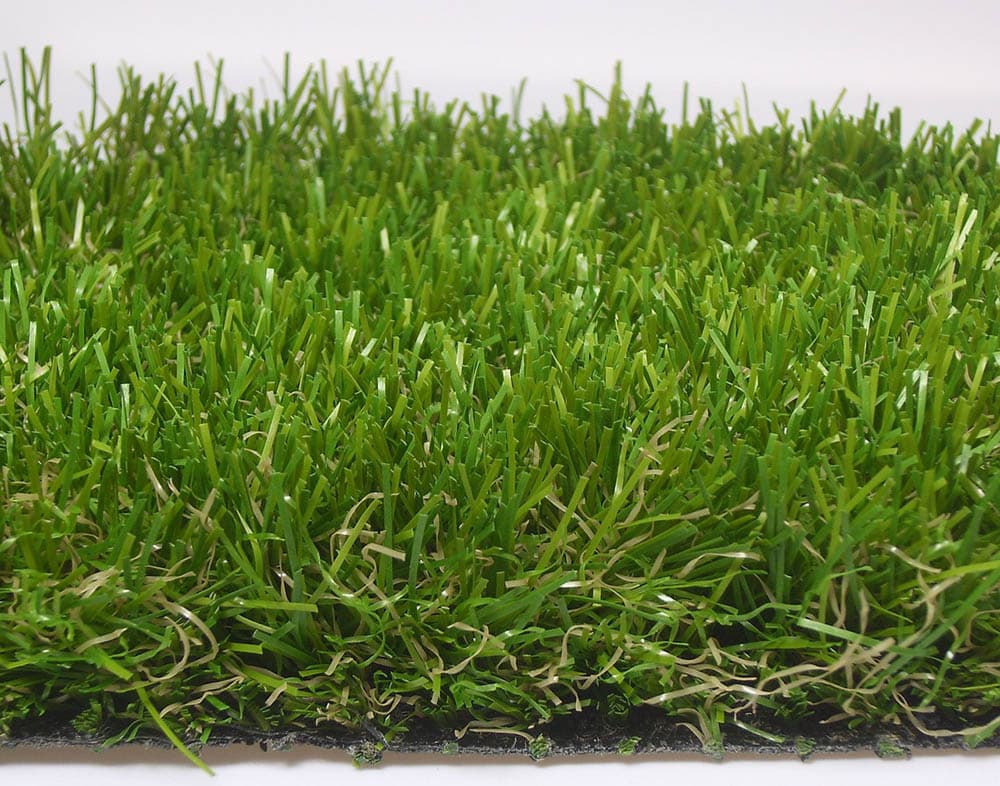
| Botanical Name | Axonopus affinis |
| Soil | Moist, poor-to-average, sandy, fertile (pH 5.0–7.0) |
| Sun | Full sun/partial shade |
| Hardiness Zone | 8–9 |
| Drought Tolerance | Low |
| In Bloom | June through late September |
Known to most as the Louisiana grass, it prefers tropical climates, moist, fertile soil, and exposure to full sun. The carpet grass also survives in partial shade; in fact, it is ideal for the spots in your yard that are always slightly shaded by trees. It’s not particularly drought-tolerant, though, but only requires 1 inch of water per week to avoid withering. Yes, this is a low-maintenance grass that thrives in many soil types.
Coarse-leaved, the carpet grass is quite dense and has a lovely light green color, along with double-branched seed stalks. To keep them under control, don’t forget to mow the lawn regularly.
6. Seashore Paspalum

| Botanical Name | Paspalum vaginatum |
| Soil | Well-drained, moist, sandy (pH 6.0–8.0) |
| Sun | Full sun |
| Hardiness Zone | 8a–11 |
| Drought Tolerance | Low |
| In Bloom | Early summer through fall |
Seashore Paspalum is one of the most salt-tolerant grass types on planet Earth (it withstands ocean-water levels). So, if you’re a bit worried that the soil in your yard is too salty, that won’t be a problem here. Moderate amounts of fertilizer and watering are the way to go here. As for mowing, you should do it frequently, but be aware that Seashore Paspalum is a bit tricky to mow.
Furthermore, it requires extra time to recover. This grass isn’t particularly drought or cold resistant. On top of that, while it won’t die in partial shade, exposure to full sun is highly recommended. Seashore paspalum is perfect for sports fields and golf courses and works great as turfgrass.
7. Bahia Grass

| Botanical Name | Paspalum notatum |
| Soil | Sandy, poor, low-nutrient (pH 7.0–7.5) |
| Sun | Full sun/partial shade |
| Hardiness Zone | 7–11 |
| Drought Tolerance | High |
| In Bloom | Late spring until the first frost |
Native to the South (from Virginia to Texas), Bahia is among the most drought-resistant coastal grass types. This is achieved thanks to the deep root system that doesn’t let the stalks fade no matter how dry the soil is. Speaking of the soil, it should be sandy and poor (not rich in nutrients). Full sun, as always, is best, but occasional partial shade won’t slow down this lawn grass in any way.
Coarse, heat-resistant, and well-suited for harsh soil conditions, the Bahia grass is an excellent choice for Louisiana. It’s quite strong against pests and diseases, too, and grows really fast, reaching up to 30 inches in height. Be sure not to overwater it, though!
8. Buffalo Grass
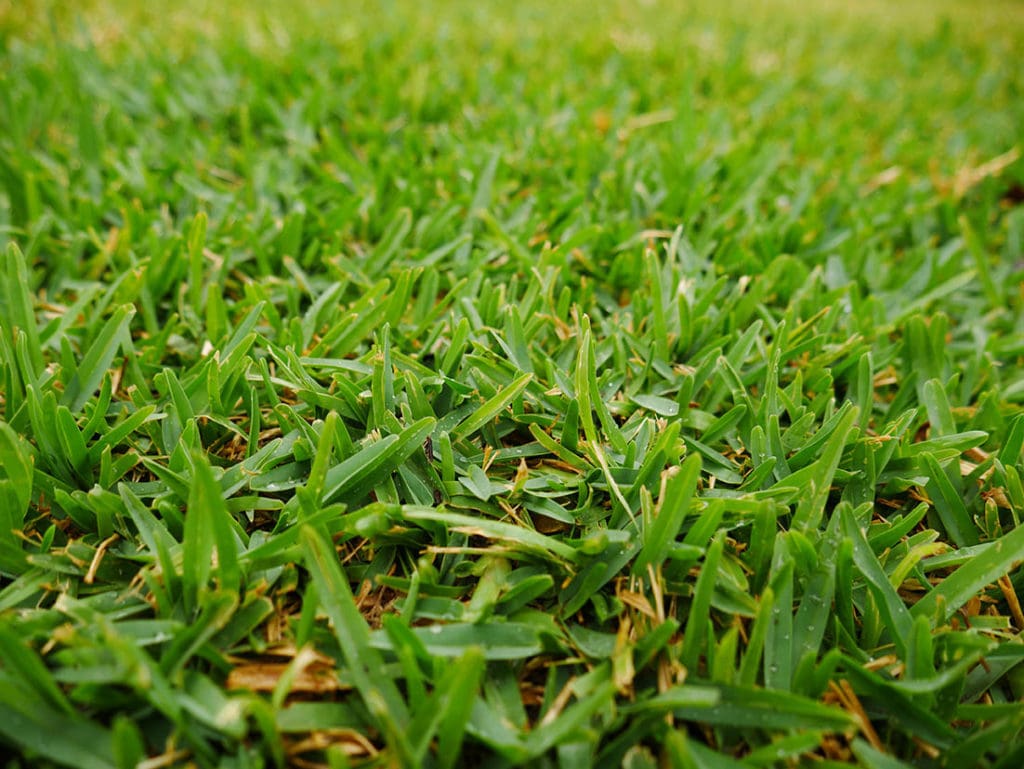
| Botanical Name | Bouteloua dactyloides |
| Soil | Well-drained, non-sandy, slightly organic (pH 6.0–7.5) |
| Sun | Full sun |
| Hardiness Zone | 5–10 |
| Drought Tolerance | High |
| In Bloom | Mid-summer to early winter |
Very little water, almost no fertilizer, and full exposure to the sun—that’s all the buffalo grass needs to flourish. It grows best in well-drained, non-sandy soil and is incredibly tolerant to drought. Moreover, it can withstand mildly cold temperatures, which makes it a go-to grass for a lawn in Louisiana (any part of the state).
As a low-maintenance, low-resource, and tough grass, buffalo is an excellent alternative to the more demanding types. It’s low-growing, by the way (only reaches 8–10 inches in height) and has a gray/blue color that fits in any environment. Oh, and it’s native to North America.
 Which Grass Types Should You Avoid?
Which Grass Types Should You Avoid?
The short answer: avoid any cold-season grasses. Louisiana is an extremely hot state, which is why warm-season grass species are preferred. You can, of course, use cold-season grass for your lawn, but the result won’t be at all satisfying. You’ll end up with patchy, unhealthy, and faded turf, simply because these species are not suited for hotter weather.
They are much better at handling cold winter days and stay green for longer. Moreover, they get that healthy green color a lot sooner than warm-season grass. Still, for a place like Louisiana, they’re a bad choice. Here’s a list of the most popular cold-season grass types that are NOT recommended for the Bayou State:
- Kentucky bluegrass
- Tall Fescue
- Hard Fescue
- Creeping Bentgrass
- Ryegrass
What’s the Best Grass for a Louisiana Lawn?
It all comes down to what part of the state you live in. If it’s too hot and dry, Bermuda grass will be a safe bet as it’s highly resistant to drought and withstands tropical climates. Zoysia grass, in turn, is resistant to cold and won’t turn brown the second the temperature drops below zero. Check the metrics for soil requirements, sun exposure, and zones to figure out which grass to use for your lawn.
If there are lots of big trees in your yard, pick shade-resistant grass. And if you like to have guests over for a barbeque, go with a foot-tolerant type. Also, do remember that most cold- and warm-season grass types have various cultivars. While they’re not dramatically different from each other, they still do have unique properties. For example, with Zoysia grass, you can choose between Zenith, JaMur, Belaire, and more.
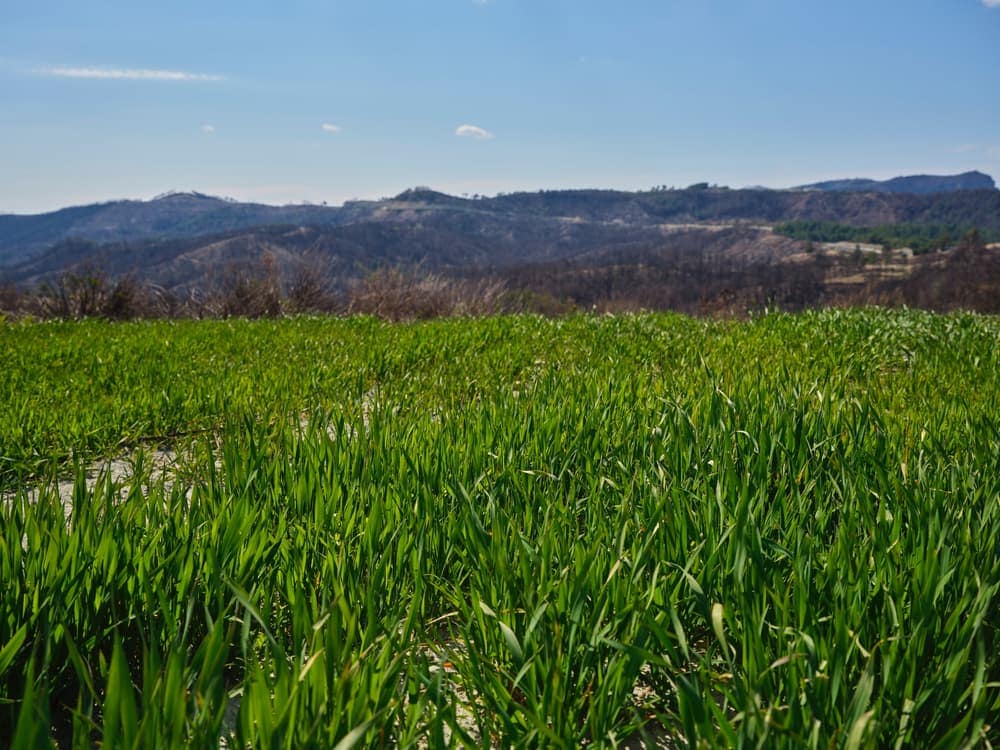
Why Does Grass Go Dormant?
This only happens because of the cold and lack of water. During extreme drought, many warm-season types of grass turn brown/yellow and go dormant. This is a defense mechanism that allows them to survive through the “tough times”. In this state, the grass is highly vulnerable to pests and foot traffic. However, once you water it (or it rains), the grass will come back to life.
As for the cold, most plants go dormant when the first frost hits. The term “frost” is used to describe 32 degrees Fahrenheit/0 degrees Celsius. Just like when there isn’t enough water to grow when the temperature drops this low, grass tends to “go to sleep” to protect itself and, again, make it through the challenging conditions.
The Importance of Mowing the Lawn
You might think that the main reason for mowing the lawn is to make it look good, but that’s actually not true. By mowing it regularly, you keep the grass blades at the right height for proper photosynthesis. This also helps it absorb the nutrients better. Now, depending on the grass type, you can mow it once a week or once a month. Make sure to check this before committing to any grass type.
In Conclusion
There’s nothing better than enjoying a hot summer day in your own backyard while sitting on beautiful, well-maintained grass. A proper lawn not only looks great and adds curb value but also reduces pollution, serves the environment, helps keep the soil healthy, and produces oxygen. It can be a challenge to grow, though, especially if you choose the wrong grass for it.
Today, we checked out the eight best grass types for turf in Louisiana. They’ve all proven to be resistant to temperature extremes and fast to grow. No matter which one you pick, it will be money well spent. Just don’t forget to water them frequently, plant them in proper soil, and ensure adequate exposure to the sun!
Featured Image Credit: nikhita-singhal, Unsplash
Contents

 Which Grass Types Should You Avoid?
Which Grass Types Should You Avoid?